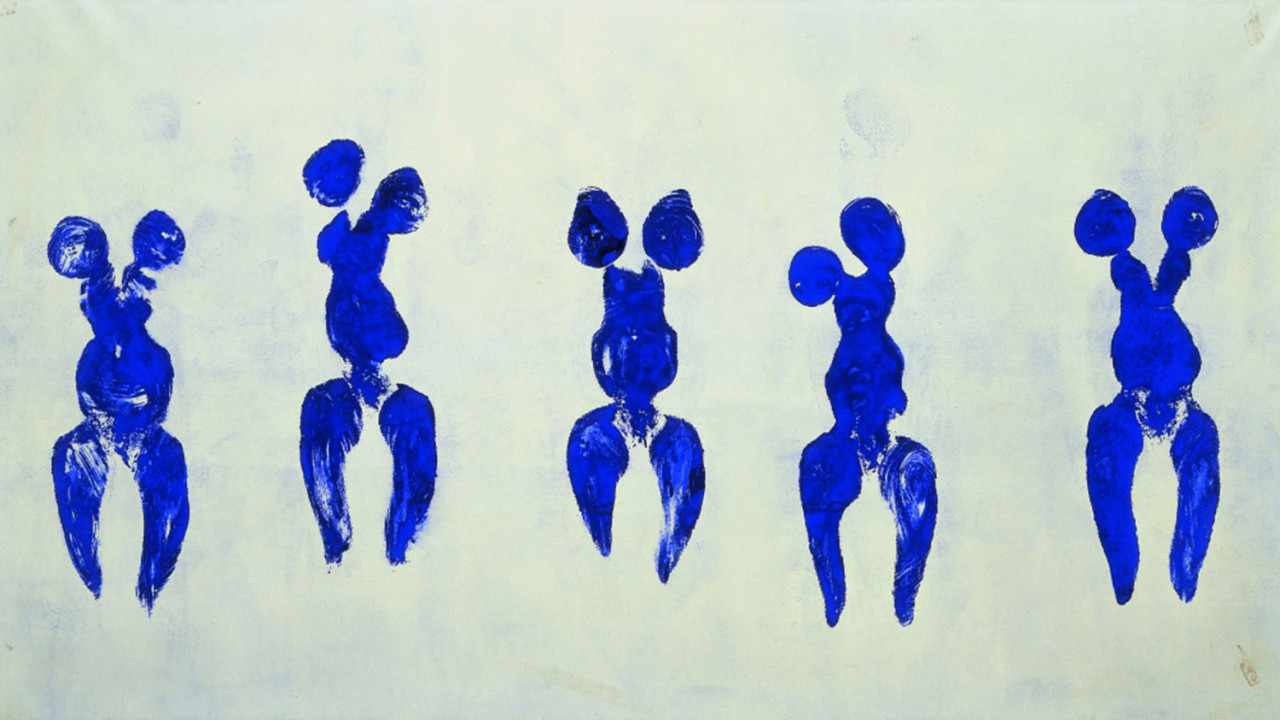Blue has long captivated artists and thinkers. Yet, few hues have transformed art like Yves Klein Blue. This vibrant tone, known as International Klein Blue (IKB), became emblematic of French artist Yves Klein’s work and marked a pivotal moment in modern art.
In the 1950s, Yves Klein (1928-1962) embarked on a series of explorations into the perception of color, aiming to create a pigment that not only had a unique visual intensity but also conveyed a transcendental sense of the spiritual and the infinite. Through his research, Klein developed a particularly vibrant blue, made from a pigment called ultramarine, mixed with synthetic resin to ensure its durability.
This was the birth of International Klein Blue (IKB), a hue that Klein himself described as a 'color without limitations' and one that he saw as a representation of the sky and the sea, two elements that for him symbolized vastness and infinity.

Klein blue was used in various series of works that marked Yves Klein’s career. One of the most representative examples is his series of Monochromes, where the artist used only this pigment on his canvases, eliminating all other colors to focus the viewer’s attention entirely on the sensations that the blue could evoke.
One of the most iconic works from this series is IKB 191 (1962), a canvas completely painted in his characteristic ultramarine blue, which reflects Klein’s experimentation with the purity and depth of color.

Another key work is Anthropometries, in which Klein used blue in a very innovative way: instead of applying the pigment with brushes, he invited nude models to cover themselves in paint and then press their bodies against canvases placed on the floor, creating bodily imprints in the process.
The resulting works, such as Anthropometry of a Nude Woman's Body (1960), not only stand out for their connection to the human figure but also demonstrate how color can acquire emotional and symbolic meaning beyond its visual appearance.

The legacy of Klein blue is not limited to the work of its creator. Many later artists have been influenced by his use of color and his exploration of the intangible. For example, Lucio Fontana (1899-1968), famous for his interventions on canvases through cuts and perforations, used Klein blue in several of his works, recognizing the power of color as a way to transcend the surface of the painting.

Another great example is Anish Kapoor (b. 1954), who was inspired by the concept of infinity that Klein attributed to blue. Kapoor, in his famous work Sky Mirror (2006), plays with the reflection of the sky, a gesture clearly influenced by Klein's obsession with infinite spaces. In this sense, Kapoor uses blue in a way that refers to the idea that the color should not only be observed but also experienced in its relationship with the environment and the viewer.

The British artist Daniel Buren (b. 1938) has also been influenced by Klein's work. In his famous Colonne de couleur series (1985), Buren uses blue in his exploration of the visual structure of space, something that directly references Klein's use of color.

The impact of this color has endured, and today it remains a reference in contemporary research on color in art. Its influence extends from painting to conceptual art, installation, and sculpture.
Yves Klein's blue, in this sense, continues to challenge our perception, inviting us to look beyond the visible.